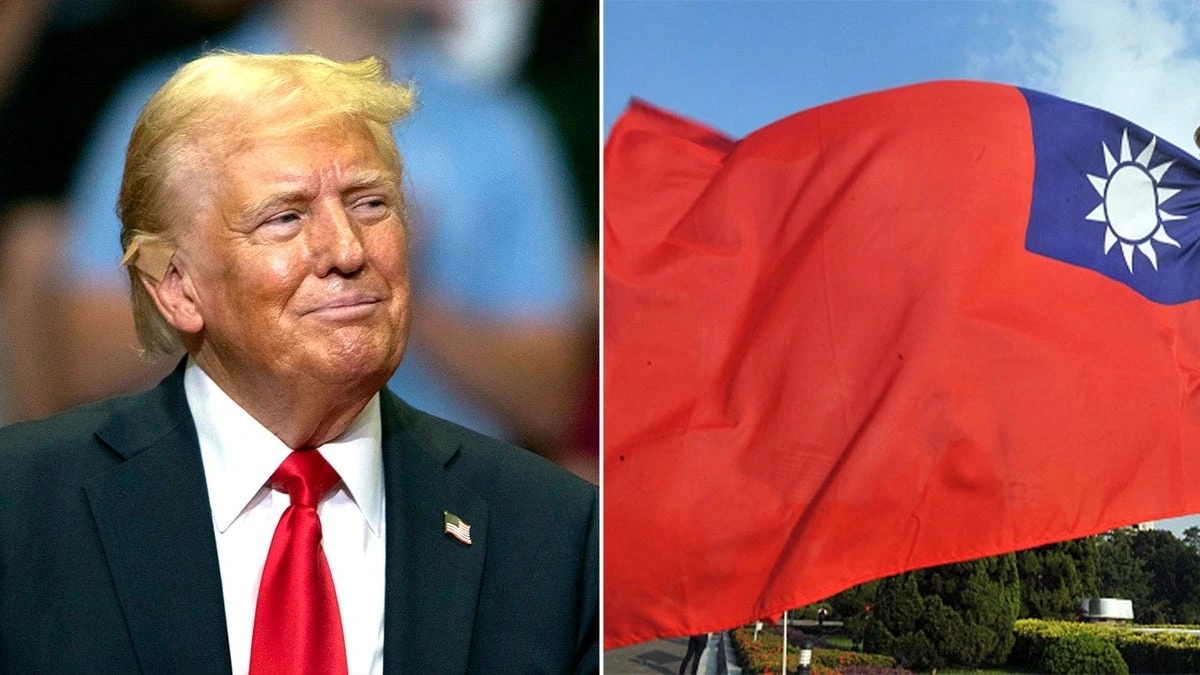TAIPEI, Taiwan — Taiwan will not agree to a proposal by the United States that calls for half of the world’s semiconductor production to be relocated to US soil, a senior Taiwanese trade negotiator said Wednesday, emphasizing that the idea was never formally discussed during recent tariff negotiations in Washington.
Vice Premier Cheng Li-chiun, who returned to Taipei this week after leading talks with US officials, told reporters that the alleged 50-50 chip production deal was not on the agenda and would not be accepted if raised.
The statement followed remarks from US Commerce Secretary Howard Lutnick, who told News Nation that Washington’s pitch aimed for a shared split of global semiconductor manufacturing between the US and Taiwan.
Our negotiating team has never made any commitment to a 50-50 split on chips, Cheng said at Taoyuan International Airport. “Rest assured, we did not discuss this issue during this round of talks, nor would we agree to such conditions.”
Taiwan is home to Taiwan Semiconductor Manufacturing Company (TSMC), the world’s largest contract chipmaker and a critical supplier for global technology firms, including Apple and Nvidia.
The island currently produces more than 60% of the world’s semiconductors and over 90% of the most advanced chips used in AI, defense, and consumer electronics.
Washington has been seeking to reduce dependence on Taiwan for chip supplies, citing concerns about supply chain security amid rising geopolitical tensions with China.
The US has introduced multiple incentives under the CHIPS and Science Act to lure semiconductor manufacturers to American soil.
TSMC is investing $165 billion in new fabrication plants in Arizona, but officials have reiterated that the majority of production will remain in Taiwan due to ecosystem advantages, supply chains, and workforce expertise.
Taiwan’s exports to the United States are currently subject to a 20% tariff, which has been a key point of contention in trade negotiations. Taipei is pushing for tariff reductions as part of broader economic cooperation talks.
Trade analysts say the US proposal for a 50-50 chip production split could signal Washington’s ambition to diversify supply chains but may not be realistic given Taiwan’s entrenched dominance in advanced chipmaking.
Taiwan has decades of expertise and a highly concentrated ecosystem that cannot simply be replicated elsewhere, said Dr. Emily Chang, a semiconductor policy researcher at the University of California, Berkeley.
A 50-50 production split may be a political aspiration rather than a feasible industrial policy. Dr. Richard Lee, a former adviser to Taiwan’s Ministry of Economic Affairs, noted that Taipei’s rejection aligns with national interests.
Chips are Taiwan’s economic backbone and strategic shield, he said. “Ceding half of that capacity would weaken Taiwan’s leverage globally and its economic resilience.”
The US Commerce Department and the Office of the US Trade Representative did not immediately respond to requests for comment on the reported proposal.
According to data from TrendForce, Taiwan accounted for 63% of global semiconductor foundry revenue in 2024, followed by South Korea at 17%, China at 7%, and the United States at 6%.
While US companies design many chips, the actual fabrication remains heavily concentrated in Asia. By comparison, the United States produced 12% of the world’s chips in the early 1990s, a figure that has since dropped below 10%.
The Biden administration’s CHIPS Act aims to boost that share to 20% by 2030. TSMC’s Arizona facilities, when fully operational, are expected to produce 4 nanometer and 3 nanometer chips, but capacity will remain small relative to Taiwan’s massive Hsinchu Science Park and southern fabs.
On the streets of Taipei, the sentiment is one of cautious pride mixed with economic pragmatism. Taiwan built its reputation through innovation and precision manufacturing, said James Wu, a senior engineer at a Hsinchu based semiconductor supplier.
Moving half of that to another country would mean losing our competitive edge. Others worry about overdependence on a single sector.
Linda Hsiao, an economics lecturer at National Chengchi University, said diversification is important but must be carefully managed. “We should cooperate globally but not at the expense of our sovereignty or strategic industries,” she said.
In the US some lawmakers have called for stronger measures to ensure domestic chip production. “We must secure our supply chains and reduce reliance on foreign production,” Sen.
Mark Daniels (D-NY) said in a recent hearing. But cooperation with allies like Taiwan should remain based on mutual benefit, not pressure.
Negotiations between Taipei and Washington are expected to continue in the coming months, focusing primarily on tariff reductions, technology partnerships, and agricultural trade.
Taiwan’s Presidential Office confirmed that President Lai Ching te met with US Under Secretary for Trade Luke J. Lindberg on Tuesday, highlighting growing bilateral engagement.
During the meeting, Lai announced that a Taiwanese agricultural delegation would purchase $10 billion in US goods over four years, including soybeans, wheat, corn, and beef signaling goodwill in trade relations even as industrial talks remain sensitive.
Premier Cho Jung tai told parliament that “substantive consultations” were underway to secure a more favorable tariff regime. Officials said progress had been made but declined to disclose details.
Analysts expect Washington to continue encouraging chip investments on US soil but acknowledge that complete parity in production is unlikely in the near term.
Taiwan will remain indispensable in the semiconductor ecosystem for the next decade at least, said Dr. Chang. “The challenge for both sides is finding a balance between economic security and industrial collaboration.”
As global demand for artificial intelligence and high performance computing accelerates, semiconductor supply chains remain a geopolitical focal point.
Taiwan’s firm stance against a 50-50 chip production deal underscores its determination to retain leadership in the sector while engaging in pragmatic trade negotiations with Washington.
Both sides are expected to pursue deeper cooperation in areas such as tariff relief, R&D partnerships, and supply chain resilience but Taiwan’s message remains clear its semiconductor crown will not be shared equally.

